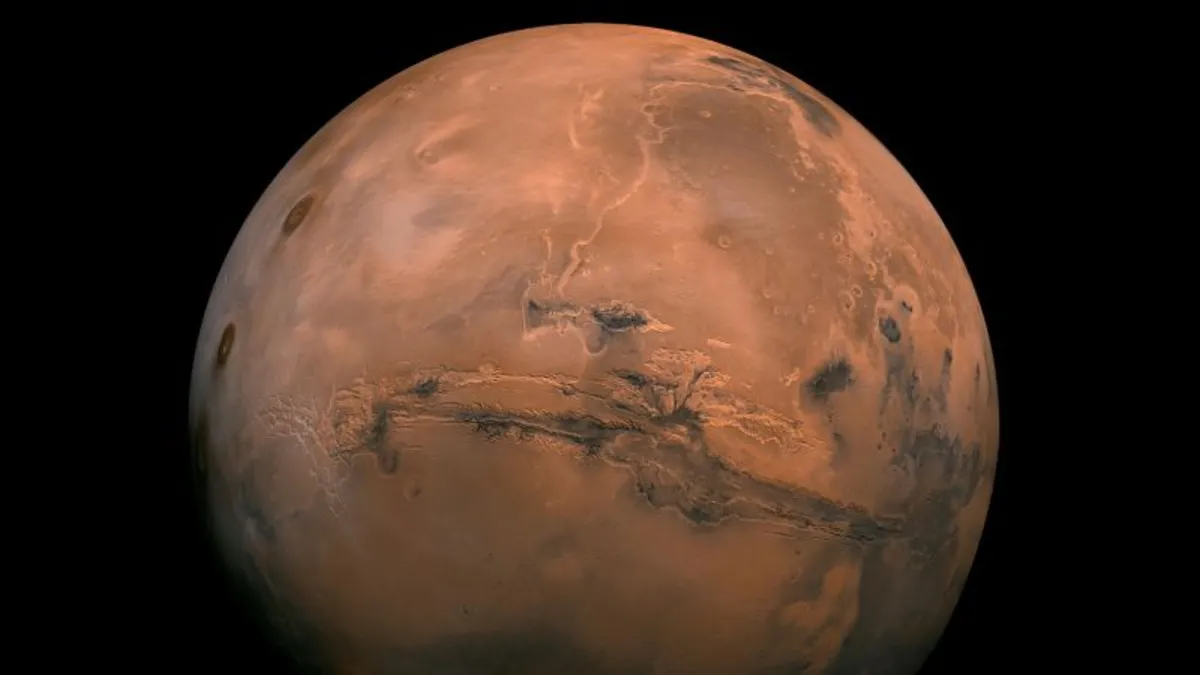
Sign up for CNN’s Wonder Theory science newsletter to explore the universe with updates on fascinating discoveries, scientific advancements, and more. Recent research has highlighted a significant concern for future missions to Mars: the presence of toxic dust. This dust poses a serious risk to astronauts, necessitating comprehensive countermeasures to ensure their safety during missions to the Red Planet.
A study published in the journal GeoHealth indicates that substances like silica, gypsum, perchlorates, and nanophase iron oxides found in Martian dust could have life-threatening consequences for astronauts. According to study co-author Justin Wang, a medical student from the Keck School of Medicine at the University of Southern California (USC), “the biggest danger is the risk to astronauts’ lungs.” The fine particles in the dust could become trapped in the lungs and even enter the bloodstream, increasing the risk of respiratory diseases.
Wang further explained that astronauts already face heightened risks for conditions like pulmonary fibrosis due to radiation exposure during spaceflight. The exposure to hazardous materials such as silica and iron oxides could exacerbate these risks, leading to severe pulmonary diseases. Additionally, perchlorates—chemical compounds detected at toxic levels in Martian soil—could potentially cause thyroid dysfunction and aplasticanemia, a condition where the body fails to produce enough blood cells.
The study emphasizes the importance of implementing effective dust filtration, regular cabin cleaning, and the use of electrostatic repulsion devices to minimize dust exposure. Despite the risks, Wang remains optimistic, stating, “While the dust on Mars isn’t going to be the most dangerous part of a mission to the Red Planet, it’s definitely a hazard that can be harmful to astronauts, yet easily avoidable given we’re properly prepared for it.”
Brian Hynek, a professor of geological sciences at the University of Boulder, pointed out the broader implications of Martian dust. He noted that dust is continuously accumulating on various surfaces, and global dust storms can significantly affect equipment functionality. “Our rovers have already experienced loss of scientific instruments or entire missions due to solar panels rendered too dusty to charge the batteries,” Hynek explained. This constant threat will necessitate ongoing maintenance for spacecraft, vehicles, and solar panels to ensure they operate effectively on Mars.
Julia Cartwright, an independent research fellow at the University of Leicester’s Institute for Space, highlighted the peculiarities of Martian dust compared to Earth dust. “On Earth, most dust particles are rounded due to transportation processes,” she explained. “In contrast, on Mars, you encounter sharp, pointy particles that can irritate lung membranes.” This irritation poses a serious health risk, akin to exposure to asbestos, known for causing severe lung conditions such as lung cancer and mesothelioma.
Cartwright also addressed the challenges of using air filters to remove harmful substances like chromium, arsenic, and cadmium from the Martian atmosphere. There would need to be a well-planned strategy for replacing these filters regularly, and ample supplies would need to be included in spacecraft design.
Jonathan Eastwood, a professor of space physics at Imperial College London, stressed the necessity for sophisticated solutions to tackle the hazards posed by Martian dust. “Given the distance from Earth to Mars, rapid evacuation is not an option,” he said. “Therefore, a complete medical capability must be established on the Martian surface.”
Natalya Zavina-James, senior exploration research manager at the UK Space Agency, emphasized the importance of studies like this one, which address the human health aspects of Mars exploration. “This study illustrates the breadth of considerations needed to protect astronauts’ health,” she remarked. As we look toward future crewed missions to Mars, these critical health implications must be thoroughly considered and planned for.